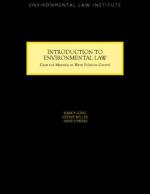|
This section contains 339 words (approx. 2 pages at 300 words per page) |
Water covers more than 70 percent of Earth's surface. It is essential to all life. Organisms can survive longer without food than without water. It is one of our most valuable resources.
Pollute means to make impure or unclean. In that sense, water pollution has always occurred as a natural phenomenon. Forest fires, storms, volcanoes, or a heavy leaf fall can contaminate a water body. However, these organic materials are broken down or biodegraded naturally.
Pollution as we know it began when humans started discarding waste including sewage and toxic chemicals. By the middle of the twentieth century, the extent of water pollution became apparent when Ohio's Cuyahoga River caught fire as a result of widespread oil pollution.
The Clean Water Act of 1972 and its subsequent amendments reduced surface-water pollution by prohibiting the dumping of toxic chemicals and medical waste, and by establishing a permitting system to reduce the direct discharge of pollutants. The Safe Drinking Water Act of 1974, later amended in 1987, set maximum allowable contaminant levels for drinking water and called for the regular monitoring of groundwater. And the Ocean Dumping Ban prohibited the marine disposal of sewage and industrial waste after 1991.
Water pollution is described as point source or nonpoint source. Point source means one can pinpoint and reduce pollution at its source. Point source pollution may come from an industrial discharge pipe, a wastewater treatment plant, or a capsized oil tanker. Nonpoint source pollution occurs when substances such as fertilizer, pesticides, and soil from erosion enter water bodies through rain runoff. Other pollutants include heavy metals such as mercury, salt, acid rain, silt, hot water, petroleum products, excess nutrients such as nitrogen and phosphorus, sewage, and animal waste. Since polluted water is extremely difficult and costly to clean up, prevention is by far the best approach to this form of environmental pollution.
Bibliography
EPA Clean Water Act. Available from http://www.epa.gov/r5water/cwa.htm.
U.S. Environmental Protection Agency. "Ocean Dumping Ban Act of 1988." Available from http://www.epa.gov/history.
|
This section contains 339 words (approx. 2 pages at 300 words per page) |


